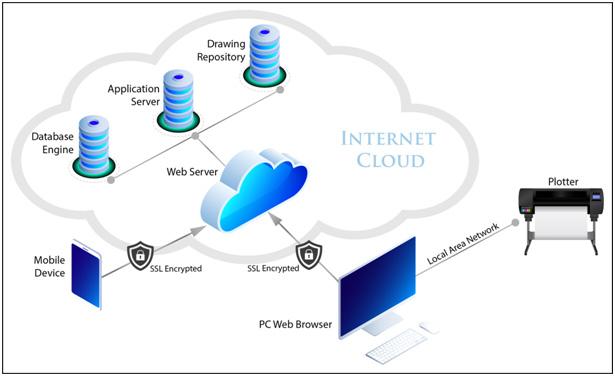The Case for Hybrid SaaS
Sep 29, 2021
Over the last decade, software vendors have rushed towards periodic software-as-a-service (SaaS) subscriptions, away from traditional perpetual licenses. This mass migration has been a boon for revenues. However, the almost exclusive emphasis on recurring revenues has triggered many integrated workspace management systems (IWMS) vendors to drop professional services, leaving customers solo or dependent on third-party VARs.
SaaS Attraction
The SaaS sales model has been an absolute blessing for the income statement. SaaS subscription margins are a healthy range of 60-80% on average. Moreover, there is every indication that SaaS is here to stay. Gartner forecasts that end-user spending on SaaS subscriptions will jump from $121 billion in 2019 to $172 billion in 2022. This is a steep jump of 42% — a resounding vote of confidence from end-users.
Accountants love how SaaS-related costs are tax-deductible in the same year that they are incurred. In contrast, the cost of revenues for perpetual licenses must be deducted over the multi-year life of the software.
 Even end-users are happily hopping onto the SaaS bandwagon. SaaS subscriptions are usually payable monthly or yearly, at very reasonable rates. Take Adobe’s popular CS6 Master Collection, one of the last versions sold as a perpetual license, its price tag was around $2,600. Today, the monthly subscription fee to access and use all of the same CS apps is just $53 per month. That’s a “no brainer” for most users.
Even end-users are happily hopping onto the SaaS bandwagon. SaaS subscriptions are usually payable monthly or yearly, at very reasonable rates. Take Adobe’s popular CS6 Master Collection, one of the last versions sold as a perpetual license, its price tag was around $2,600. Today, the monthly subscription fee to access and use all of the same CS apps is just $53 per month. That’s a “no brainer” for most users.
According to Software Advisor, a vendor that specializes in providing software purchasing advice to enterprise buyers, more than 60% of their buyers are only looking for SaaS cloud-based applications, while less than 2% specifically ask for on-premises software.
The cherry on top of this already rich revenue dessert is that the valuation multiplier for SaaS companies is generally twice as high as traditional software companies— 6x versus 3x revenue. In short, investors almost always prefer a SaaS company over their perpetual license compatriots.
In spite of the overwhelming positives, the SaaS “sundae” is a few toppings short of perfection in service-dependent market segments such as facilities management where customers require far more service support than a pure SaaS model can provide.
Typical IWMS SaaS Offerings
Before looking at SaaS’ blemishes, let’s review what IWMS SaaS offerings include. IWMS SaaS services typically include the networking, hosting, database, and application administration services necessary to enable users to access the cloud-based software over a standard web browser or smart device. For example, the figure below displays the SaaS components of VLogic’s IWMS SaaS offering, VLogicFM. Four cloud servers work together to enable users to access VLogicFM over the web:
- Drawings Repository – stores accurate facility CAD drawings on the cloud and provides access controls for easy sharing over the web or on smart devices
- Web Server – serves up the Web and mobile interfaces necessary for users to interact with VLogicFM over client desktop web browsers or smart iOS and Android devices.
- Database Engine – stores fields of facility data that are used by the system to link key facility data to each other and to spaces, assets, and even drawings.
- Application Server – provides the logic and software functionality to match facility drawings with data-rich databases for streamlining management of facility assets, space, drawing, and user data.

IWMS Professional Services Requirements
For SaaS applications like Adobe Photoshop or Illustrator, customer onboarding is as simple as creating an account with Adobe—which the user can do on her own. Onboarding an IWMS customer, however, requires significant data migration services.
IWMS systems require a lot of information about the facility before it can be activated. Required customer data could include as-built drawings, user data / configuration information, department assignments, room IDs, space functions, and data inventories of things that need to be managed: furniture, key assets, life safety systems, etc.
For example, the following table outlines the professional services needed to onboard two typical VLogicFM IWMS software modules, As-builts module (for managing master facility as-built drawings) and Space module (for managing space utilization):
IWMS Onboarding Services Requirements
AS-BUILTS MODULE
- Develop master composite as-built CAD drawings from customer’s multiple as-built versions
- Convert PDF and paper drawings to CAD
- Perform onsite verification survey if existing as-builts are inaccurate
SPACE MODULE
- Collect, organize, and upload space data: room numbers, room functions, room descriptions, department assignments, chargeback rates, etc.
- Create polyline objects in CAD drawing for linking to space data
- Link as-built drawings to space data
- AFTER onboarding, update as-built drawings in response to building renovations and additions
Given that professional services margins are as much as 50 points lower than SaaS, there is significant pressure to offload professional services altogether. However, there are important customer-related considerations that should be factored in before offloading these services to third parties.
The Continuing Need for Professional Services
Offloading critical data migration services, especially for complex healthcare facilities, looks good on the income statement but may have a significantly negative impact on customer service. Value-added resellers do not know an IWMS system as well as the IWMS provider, which increases the probability of mistakes leading to compromised schedules and unhappy customers.
A customer is the most important visitor on our premises, he is not dependent on us. We are dependent on him. He is not an interruption in our work. He is the purpose of it.
– Mahatma Gandhi
In addition to higher errors, multiple vendors increase the risk of deployment inconsistencies, which also results in customer complaints.
In an ideal world, IWMS providers should provide both SaaS and data migration services without paying a premium in lost margins. Understandably, this is not possible if professional services are provided in the United States by US-based resources. However, you can “have your cake and eat it too” if a substantial portion of the professional services is provided off-shore.
Hybrid SaaS Offerings
Some IWMS vendors, like VLogic Systems, have resisted the siren call of SaaS-only margins, precisely because of the risk to customer satisfaction. Rather than offload onboarding and drawings update services, VLogic bundles these critical services directly into its SaaS subscription offering.
VLogic has a team of offshore drafters and system admins that makes it possible to offer data migration services AND US-based SaaS services without impacting the company’s revenue margins. VLogic’s unique Hybrid SaaS subscription includes the following services; standard SaaS services are shown in black and bundled professional services are in red:
- Networking /hosting
- Database administration
- Application administration
- Master CAD drafting services
- Data migration services
- Unlimited CAD update services

Because the onboarding and update services are bundled into the monthly SaaS fee, customers still get the advantage of the lower monthly rates without having to pay high up front onboarding costs. Furthermore, continuing update services allow customers to maintain consistent drawings accuracy during the entire life of their subscription without expensive time and materials service agreements.
Final Take Away
The SaaS software model is clearly the best sales model for most modern commercial software. However, in the rush to improve margins and ratchet up valuation multipliers, providers should review the customer impact of offloading data migration and update services to third-party service providers. In particular, providers of SaaS apps that require significant professional services at onboarding or customer data update services during the term of the subscription may want to consider a hybrid SaaS approach. At the end of the day, it is not just about making a buck, but also about making a difference for the customers we serve.